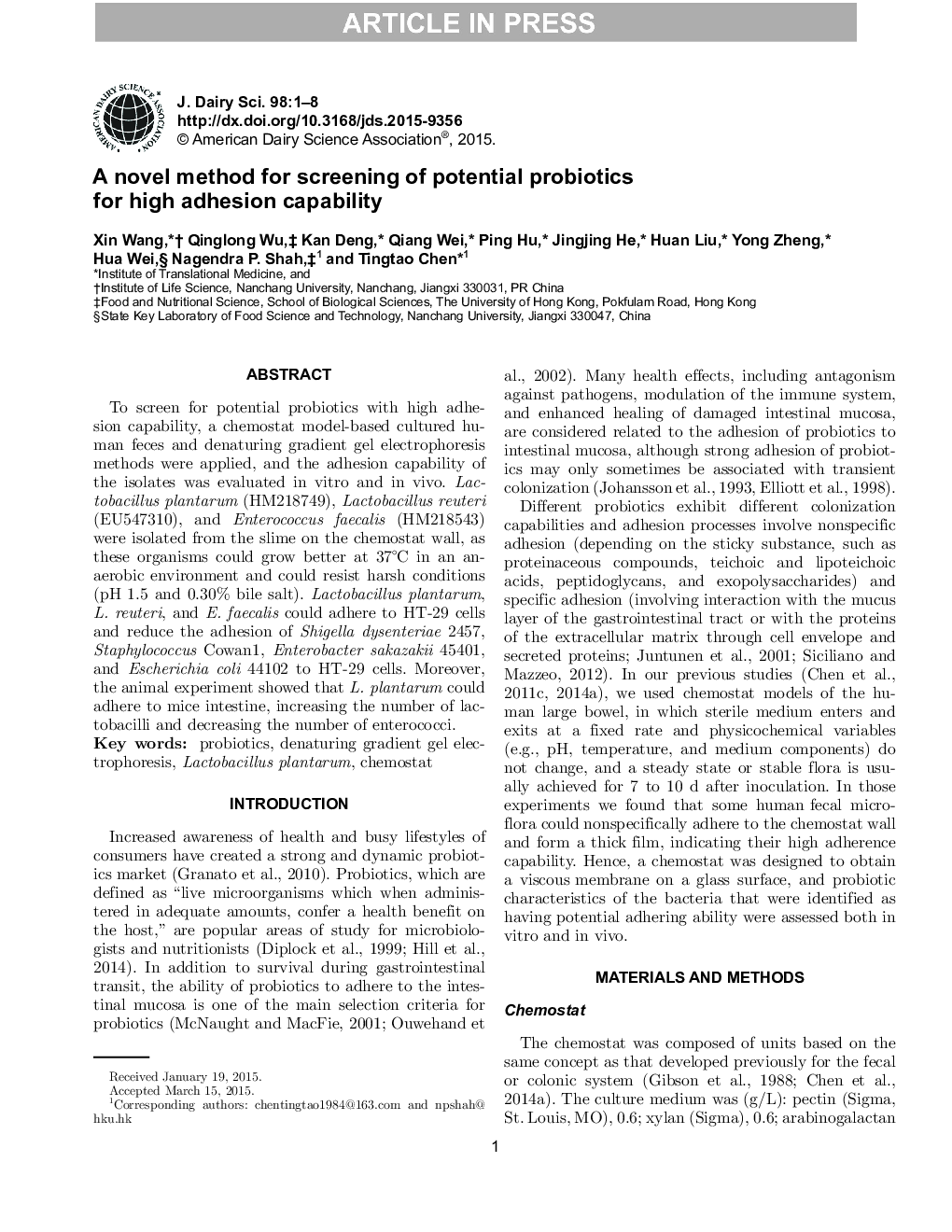| Article ID | Journal | Published Year | Pages | File Type |
|---|---|---|---|---|
| 10975227 | Journal of Dairy Science | 2015 | 8 Pages |
Abstract
To screen for potential probiotics with high adhesion capability, a chemostat model-based cultured human feces and denaturing gradient gel electrophoresis methods were applied, and the adhesion capability of the isolates was evaluated in vitro and in vivo. Lactobacillus plantarum (HM218749), Lactobacillus reuteri (EU547310), and Enterococcus faecalis (HM218543) were isolated from the slime on the chemostat wall, as these organisms could grow better at 37°C in an anaerobic environment and could resist harsh conditions (pH 1.5 and 0.30% bile salt). Lactobacillus plantarum, L. reuteri, and E. faecalis could adhere to HT-29 cells and reduce the adhesion of Shigella dysenteriae 2457, Staphylococcus aureus Cowan1, Enterobacter sakazakii 45401, and Escherichia coli 44102 to HT-29 cells. Moreover, the animal experiment showed that L. plantarum could adhere to mice intestine, increasing the number of lactobacilli and decreasing the number of enterococci.
Related Topics
Life Sciences
Agricultural and Biological Sciences
Animal Science and Zoology
Authors
Xin Wang, Qinglong Wu, Kan Deng, Qiang Wei, Ping Hu, Jingjing He, Huan Liu, Yong Zheng, Hua Wei, Nagendra P. Shah, Tingtao Chen,
